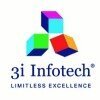
i
ValueLabs
Filter interviews by
ValueLabs Associate Data Engineer Interview Questions and Answers
ValueLabs Associate Data Engineer Interview Experiences
1 interview found
I applied via Naukri.com and was interviewed in Apr 2021. There were 3 interview rounds.
Interview Questionnaire
1 Question
- Q1. Azure data factory databricks pyspark data warehouse synapse
Interview Preparation Tips
Top trending discussions






Interview questions from similar companies

I applied via AmbitionBox and was interviewed in Nov 2024. There were 4 interview rounds.
(2 Questions)
- Q1. About your self
- Q2. Communication skills
(3 Questions)
- Q1. Programming language
- Q2. What tools do you utilize for data analysis?
- Ans.
I utilize tools such as Excel, Python, SQL, and Tableau for data analysis.
Excel for basic data manipulation and visualization
Python for advanced data analysis and machine learning
SQL for querying databases
Tableau for creating interactive visualizations
- Q3. Pandas numpy seaborn matplot
Data analysis of code in the context of data analysis.
Coding logical question paper.

Senior Data Engineer Interview Questions & Answers
Persistent Systemsposted on 17 Jul 2024
I applied via Naukri.com and was interviewed in Aug 2024. There were 2 interview rounds.
(12 Questions)
- Q1. Tell me about yourself and Project
- Ans.
I am a Senior Data Engineer with experience in developing data pipelines and optimizing data storage for various projects.
Developed data pipelines using Apache Spark for real-time data processing
Optimized data storage using technologies like Hadoop and AWS S3
Worked on a project to analyze customer behavior and improve marketing strategies
- Q2. What was you day-to-day job in your project
- Ans.
My day-to-day job in the project involved designing and implementing data pipelines, optimizing data workflows, and collaborating with cross-functional teams.
Designing and implementing data pipelines to extract, transform, and load data from various sources
Optimizing data workflows to improve efficiency and performance
Collaborating with cross-functional teams including data scientists, analysts, and business stakeholde...
- Q3. Spark Architecture
- Q4. How DAG handle Fault tolerance?
- Ans.
DAGs handle fault tolerance by rerunning failed tasks and maintaining task dependencies.
DAGs rerun failed tasks automatically to ensure completion.
DAGs maintain task dependencies to ensure proper sequencing.
DAGs can be configured to retry failed tasks a certain number of times before marking them as failed.
- Q5. What is shuffling? How to Handle Shuffling?
- Ans.
Shuffling is the process of redistributing data across partitions in a distributed computing environment.
Shuffling is necessary when data needs to be grouped or aggregated across different partitions.
It can be handled efficiently by minimizing the amount of data being shuffled and optimizing the partitioning strategy.
Techniques like partitioning, combiners, and reducers can help reduce the amount of shuffling in MapRed
- Q6. What is the difference between repartition and Coelsce?
- Ans.
Repartition increases or decreases the number of partitions in a DataFrame, while Coalesce only decreases the number of partitions.
Repartition can increase or decrease the number of partitions in a DataFrame, leading to a shuffle of data across the cluster.
Coalesce only decreases the number of partitions in a DataFrame without performing a full shuffle, making it more efficient than repartition.
Repartition is typically...
- Q7. How do you handle Incremental data?
- Ans.
Incremental data is handled by identifying new data since the last update and merging it with existing data.
Identify new data since last update
Merge new data with existing data
Update data warehouse or database with incremental changes
- Q8. What is SCD ??
- Ans.
SCD stands for Slowly Changing Dimension, a concept in data warehousing to track changes in data over time.
SCD is used to maintain historical data in a data warehouse.
There are three types of SCD - Type 1, Type 2, and Type 3.
Type 1 SCD overwrites old data with new data.
Type 2 SCD creates a new record for each change, preserving history.
Type 3 SCD maintains both old and new values in the same record.
SCD is important for...
- Q9. Scenerio based questions related to Spark ?
- Q10. Two SQL Codes and Two Python codes like reverse a string ?
- Ans.
Reverse a string using SQL and Python codes.
In SQL, use the REVERSE function to reverse a string.
In Python, use slicing with a step of -1 to reverse a string.
- Q11. Find top 5 countries with highest population in Spark and SQL
- Ans.
Use Spark and SQL to find the top 5 countries with the highest population.
Use Spark to load the data and perform data processing.
Use SQL queries to group by country and sum the population.
Order the results in descending order and limit to top 5.
Example: SELECT country, SUM(population) AS total_population FROM table_name GROUP BY country ORDER BY total_population DESC LIMIT 5
- Q12. Using two tables find the different records for different joins
- Ans.
To find different records for different joins using two tables
Use the SQL query to perform different joins like INNER JOIN, LEFT JOIN, RIGHT JOIN, and FULL JOIN
Identify the key columns in both tables to join on
Select the columns from both tables and use WHERE clause to filter out the different records
(7 Questions)
- Q1. What is a catalyst optimiser? How it works?
- Ans.
A catalyst optimizer is a query optimization tool used in Apache Spark to improve performance by generating an optimal query plan.
Catalyst optimizer is a rule-based query optimization framework in Apache Spark.
It leverages rules to transform the logical query plan into a more optimized physical plan.
The optimizer applies various optimization techniques like predicate pushdown, constant folding, and join reordering.
By o...
- Q2. Tell me about the optimization you used in your project.
- Ans.
Used query optimization techniques to improve performance in database queries.
Utilized indexing to speed up search queries.
Implemented query caching to reduce redundant database calls.
Optimized SQL queries by restructuring joins and subqueries.
Utilized database partitioning to improve query performance.
Used query profiling tools to identify and optimize slow queries.
- Q3. Pyspark question related to merging two schemas?
- Q4. What is the best approach to finding whether the data frame is empty or not?
- Ans.
Use the len() function to check the length of the data frame.
Use len() function to get the number of rows in the data frame.
If the length is 0, then the data frame is empty.
Example: if len(df) == 0: print('Data frame is empty')
- Q5. Spark Architecture
- Q6. How do you decide on cores and worker nodes?
- Ans.
Cores and worker nodes are decided based on the workload requirements and scalability needs of the data processing system.
Consider the size and complexity of the data being processed
Evaluate the processing speed and memory requirements of the tasks
Take into account the parallelism and concurrency needed for efficient data processing
Monitor the system performance and adjust cores and worker nodes as needed
- Q7. What happens when we enforce schema ?
- Ans.
Enforcing schema ensures that data conforms to a predefined structure and rules.
Ensures data integrity by validating incoming data against predefined schema
Helps in maintaining consistency and accuracy of data
Prevents data corruption and errors in data processing
Can lead to rejection of data that does not adhere to the schema
Interview Preparation Tips
- SQL
- Pyspark
- Python
- Spark
- Database
Skills evaluated in this interview

Data Engineer Interview Questions & Answers
Koch Business Solutionsposted on 16 Nov 2024
(1 Question)
- Q1. More on Technical area
(1 Question)
- Q1. More on Technical area
(1 Question)
- Q1. Technical + Behaviour
(1 Question)
- Q1. Technical + Behaviour
(1 Question)
- Q1. Expectation and Genaral

I applied via Campus Placement and was interviewed in Dec 2024. There were 2 interview rounds.
Basics of mathematical ability and verbal ability
(2 Questions)
- Q1. Introduction - explain projects
- Q2. Data analytics explain

Data Engineer Interview Questions & Answers
Happiest Minds Technologiesposted on 28 Aug 2024
(5 Questions)
- Q1. Data warehousing related questions
- Q2. SQL scenario based questions
- Q3. Project experience
- Ans.
I have experience working on projects involving data pipeline development, ETL processes, and data warehousing.
Developed ETL processes to extract, transform, and load data from various sources into a data warehouse
Built data pipelines to automate the flow of data between systems and ensure data quality and consistency
Optimized database performance and implemented data modeling best practices
Worked on real-time data pro...
- Q4. Python Based questions
- Q5. AWS features and questions
(2 Questions)
- Q1. Similar to first round but in depth questions relatively
- Q2. Asked about career goals and stuff
(2 Questions)
- Q1. General work related conversation
- Q2. Salary discussion

I applied via Naukri.com and was interviewed in Nov 2024. There was 1 interview round.
(2 Questions)
- Q1. Spark Architecture
- Q2. Cache vs persist, lazy evaluation

I applied via Job Portal and was interviewed in Apr 2024. There were 2 interview rounds.
(1 Question)
- Q1. General discussion of background and technical interview availability.Expected Salary,current salary
(8 Questions)
- Q1. Tell me about yourself.
- Q2. Which project have you recently worked on?
- Q3. How much experience do you have in python and R?
- Ans.
I have 3 years of experience in Python and 2 years in R.
3 years of experience in Python, used for data cleaning, analysis, and visualization.
2 years of experience in R, utilized for statistical analysis and data modeling.
Proficient in using libraries like pandas, numpy, matplotlib in Python and ggplot2, dplyr in R.
- Q4. What project have you worked on in R programming?
- Ans.
I have worked on a project in R programming analyzing customer churn for a telecommunications company.
Used R programming to clean and analyze customer data
Created visualizations to identify patterns and trends in customer behavior
Built predictive models to forecast customer churn rates
Collaborated with stakeholders to present findings and recommendations
- Q5. Which databases have you worked on?
- Ans.
I have worked on databases such as MySQL, SQL Server, and MongoDB.
MySQL
SQL Server
MongoDB
- Q6. Given a list of strings, find the string matching a particular pattern.
- Ans.
Find a string matching a specific pattern in a list of strings.
Use regular expressions to search for the pattern in each string.
Iterate through the list of strings and apply the pattern matching logic.
Return the string that matches the pattern, if found.
Example: List of strings - ['apple', 'banana', 'cherry'], pattern - 'ba' would return 'banana'.
- Q7. Given a list of dictionary, find the dictionary which has the count of key highest among all the dictionaries. eg: [{a:5},{b:2}.......] Now here 5 is the highest key value so it should be printed.
- Ans.
Find the dictionary with the highest count of keys in a list of dictionaries.
Iterate through the list of dictionaries and keep track of the dictionary with the highest count of keys.
Use a loop to count the keys in each dictionary and compare it with the current highest count.
Return the dictionary with the highest count of keys.
- Q8. Do you have experience in converting python scripts to R?
- Ans.
Yes, I have experience in converting Python scripts to R.
I have converted several Python scripts to R for data analysis projects.
I am proficient in both Python and R programming languages.
I can provide examples of projects where I have successfully converted Python scripts to R.
Interview Preparation Tips
- Python
- R programming
- Database
- Lists
- Dictionaries
- Data Structures
Focus on accessing elements from different structures and performing basic operations on them.
Skills evaluated in this interview

(3 Questions)
- Q1. ReduceByKey vs groupByKey
- Ans.
reduceByKey is more efficient than groupByKey for aggregating data in Spark due to reduced shuffling.
reduceByKey combines values for each key in each partition before shuffling data
groupByKey shuffles all data to a single partition before combining values for each key
reduceByKey is preferred for large datasets to minimize data movement and improve performance
- Q2. Word count in scala
- Ans.
Scala provides a simple way to count words in a string using built-in functions.
Use the split function to split the string into an array of words
Use the length function to get the count of words in the array
- Q3. Second highest salary SQL
- Ans.
Use SQL query with ORDER BY and LIMIT to find the second highest salary.
Use ORDER BY clause to sort salaries in descending order
Use LIMIT 1,1 to skip the first highest salary and get the second highest salary
Skills evaluated in this interview

I applied via Approached by Company and was interviewed in Mar 2024. There were 2 interview rounds.
Coding test for all the student attending the first round, give your best practice every day all the best in your interview
(2 Questions)
- Q1. What are your interest
- Ans.
My interests include data analysis, problem-solving, and continuous learning.
Data analysis
Problem-solving
Continuous learning
- Q2. Java related question
Interview Preparation Tips
Tell us how to improve this page.
ValueLabs Interviews By Designations
- ValueLabs Senior Software Engineer Interview Questions
- ValueLabs Software Engineer Interview Questions
- ValueLabs System Analyst Interview Questions
- ValueLabs Analyst Interview Questions
- ValueLabs Senior Analyst Interview Questions
- ValueLabs Executive Interview Questions
- ValueLabs Management Trainee Interview Questions
- ValueLabs QA Engineer Interview Questions
- Show more
Interview Questions for Popular Designations
- Data Analyst Interview Questions
- Data Engineer Interview Questions
- Data Scientist Interview Questions
- Data Entry Operator Interview Questions
- Associate Data Scientist Interview Questions
- Associate Data Analyst Interview Questions
- Data Associate Interview Questions
- Senior Data Engineer Interview Questions
- Show more
Interview Questions from Similar Companies
Fast track your campus placements
|
Senior Software Engineer
2.2k
salaries
| ₹4.4 L/yr - ₹25 L/yr |
|
Software Engineer
823
salaries
| ₹7.1 L/yr - ₹14 L/yr |
|
Analyst
551
salaries
| ₹8.5 L/yr - ₹31 L/yr |
|
Technical Lead
414
salaries
| ₹12 L/yr - ₹42 L/yr |
|
System Analyst
386
salaries
| ₹9 L/yr - ₹34 L/yr |

TCS

Infosys

Wipro

HCLTech
- Home >
- Interviews >
- ValueLabs Interview Questions >
- ValueLabs Associate Data Engineer Interview Questions













